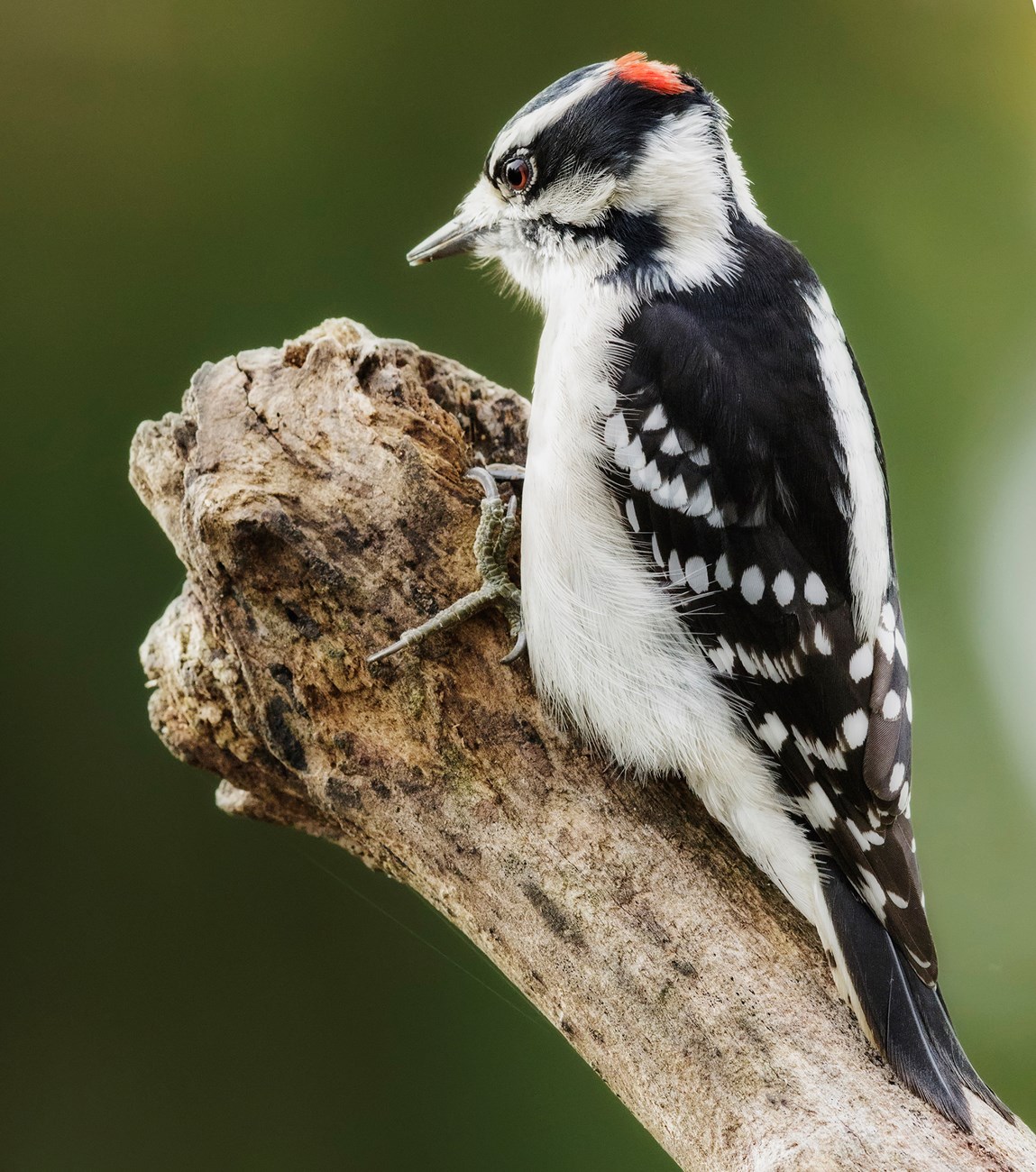
NPS/Neal Lewis IntroductionMore often seen in winter at suet feeders than in the woods, “Downys” are year-round residents of ShenandoahNational Park and in most of their range. Downy Woodpeckers hold the distinction of being the most common and smallest American woodpecker. In ShenandoahNational Park, Downy Woodpeckers are among the relatively few bird species regularly seen during the winter. Physical DescriptionDowny Woodpeckers are between 6 and 7 inches (14-17 cm) in length and their wingspan is between 10 and 12 inches (25-30 cm). Adult birds weigh between 0.74 and 1 ounces (21-28 g). The downy has a white breast with black and white back. Males sport a red nape. The most similar species is the hairy woodpecker, which has nearly identical plumage. However, the Hairy Woodpecker is larger (7.5 inches) and has a longer bill. Life Span/ReproductionAs with many small birds, Downy Woodpeckers have a relatively short lifespan. A five year old downy is an old bird, as the median lifespan of Downys is between one and two years. Despite this, a Downy Woodpecker that was captured and banded at the San FranciscoBay bird observatory was recaptured 11 years and one month later. When originally captured, its plumage indicated that it was at least a year old, meaning that this bird was twelve or more years of age. This capture and recapture do not represent the greatest time span on record; according to the Bird Banding Laboratory of the U.S. Fish and Wildlife Service, which keeps records of banding and recapture, a Downy Woodpecker was caught 11 years and 11 months after its first capture. Downys, like other small birds, have a median life span that is much shorter than the maximum due to high mortality in the first year of life. Range/HabitatDowny Woodpeckers are found throughout the United States with the exception of Hawaii and parts of Texas, New Mexico, Arizona, Nevada, California, and Alaska. They are found year-round throughout this range, though, like many year-round resident birds, they may change the areas that they frequent, thus seeming to appear and disappear with the change of seasons. BehaviorThe Downy call is a sharp “pik” and song a harsh rattle. Drumming, one of the unique characteristics of woodpeckers, is both functional and a way to defend territory. While drumming is needed to create a nesting cavity or find insects under heavy bark, male woodpeckers also drum to establish a territory and maintain dominance afterwards. Woodpeckers have a shock-absorbing system in their heads that prevents their brains from slamming into their skull. Additionally, their skulls are heavier than most birds’ to withstand the repeated impact. Ecosystem Role/ThreatsDowny Woodpeckers are preyed upon by the American Kestrel, the Sharp-shinned Hawk, and the Cooper’s Hawk. Downys can be captured while in flight. Black rat snakes often prey on Downy eggs and nestlings, as do flying, red, and eastern grey squirrels. The narrow entrance to the Downy Woodpecker’s nest protects both the adults and the young from practically all predators except snakes. DietWhile suet is a common food source for many suburban Downys, in the wild they feed on insects and grubs which they find under bark, on plant stems, and in galls of trees. A much smaller part of their diet is composed of fruit and seeds. Downy woodpeckers are one of the few woodpecker species that will come to a feeder, most often for suet. |
Last updated: July 11, 2018
